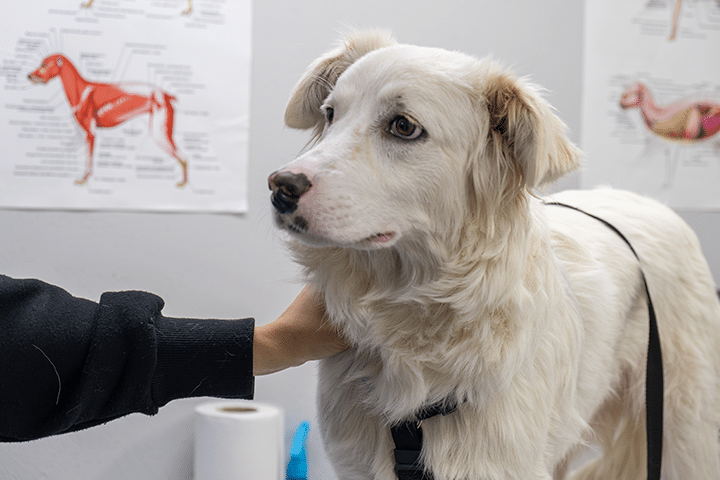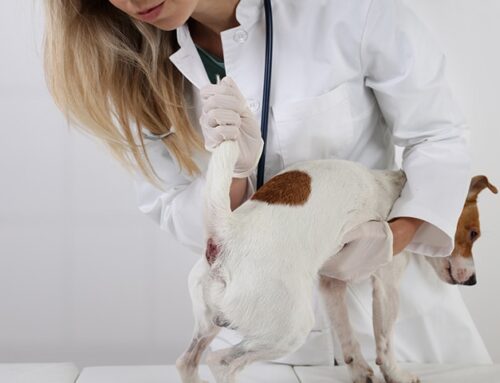Best Age to Spay or Neuter Your Dog: A Veterinarian’s Guide
Top 3 Takeaways – Best Age for Spay/Neuter
Introduction
One of the most common questions we hear at Bliss Animal Hospital in Lake Forest, CA is: “When is the best time to spay or neuter my dog?”
It’s a great question—and the answer isn’t always one-size-fits-all. While spay and neuter surgeries are standard procedures, the timing can impact your dog’s future health, behavior, and even mobility.
This guide offers an evidence-based breakdown of spay/neuter timing by size, breed, and sex, so you can make the most informed decision for your dog.
Why Timing Matters
Sterilization timing affects multiple aspects of a dog’s health, including:
Choosing the right window balances the benefits of early sterilization with the specific developmental needs of your dog.
Recommended Spay/Neuter Ages by Dog Size
| Dog Size | Recommended Age | Reasoning |
|---|---|---|
| Small breeds (<25 lb) | 5–6 months | Earlier growth plate closure, low orthopedic risk, early behavior benefits |
| Medium breeds (25–50 lb) | 6–9 months | Balanced development and behavior control |
| Large breeds (50–90 lb) | 12–15 months | Prevent orthopedic issues, allow full musculoskeletal maturity |
| Giant breeds (>90 lb) | 15–18 months | Higher risk of hip dysplasia and joint disease if neutered too early |
Breed-Specific Considerations
Golden Retrievers, Labradors, and German Shepherds
These popular large breeds are more prone to joint conditions such as hip dysplasia, cruciate ligament rupture, and elbow dysplasia. Studies suggest that delaying spay or neuter until at least 12 months can reduce the risk of these issues.
Boxers and Dobermans
Some research has found correlations between early sterilization and higher rates of certain cancers in these breeds. Talk to your vet about a personalized plan.
French Bulldogs, Pugs, and Other Brachycephalics
Flat-faced breeds are already at higher risk during anesthesia. While they can be sterilized around 6 months, we take additional surgical precautions. The exact timing may vary depending on airway development.
What About Females? Should They Go Through One Heat First?
This is a common myth. Here’s the truth:
That said, for large breed females, we may recommend spaying closer to 12 months if they are not at high risk of accidental pregnancy.
Factors That May Shift the Timeline
Shelter or Rescue Background
If your dog was adopted from a shelter, sterilization may have occurred as early as 8 weeks. While not ideal in all cases, early-age spay/neuter is common in shelter settings to ensure population control.
Behavior Concerns
If your male dog is developing problematic behaviors like roaming, marking, or dominance aggression, early neutering (before 9 months) can help reduce hormone-driven tendencies.
Multi-Dog Households
Spaying or neutering one dog early may reduce tension between intact housemates. It’s especially useful for preventing mating between household pets or dominance challenges.
Can Spay/Neuter Timing Affect Lifespan?
Some studies have found slightly longer lifespans in sterilized dogs, but this depends on the breed, timing, and overall healthcare.
In general:
At Bliss Animal Hospital, we consider the most up-to-date research when advising on timing.
A Note on Pediatric Spay/Neuter
“Pediatric” spay/neuter refers to procedures done as early as 8 weeks of age. This is generally reserved for shelter or rescue animals and is not recommended for all privately owned pets.
Drawbacks may include:
We typically recommend waiting until at least 5–6 months unless there’s a specific medical or behavioral reason to proceed earlier.
What Happens If You Wait Too Long?
Waiting too long can bring its own risks:
Our rule of thumb: plan ahead and talk to your vet no later than 4–5 months of age.
Conclusion
There’s no one-size-fits-all answer to the best age for spaying or neutering a dog. However, with the right guidance and planning, we can choose the timeline that protects your pet’s health, supports good behavior, and fits your household’s needs.
At Bliss Animal Hospital, we tailor our recommendations based on your dog’s breed, size, lifestyle, and medical history—because your dog isn’t just a number.
Call to Action (CTA)
Schedule online or call us at (949) 354-5201 to book your appointment today.
Dog Spay and Neuter Services in Orange County, CA
Meet Our Team
The blissfull faces behind the care
Driven by compassion and purpose, here is the team who will work to make a difference in your pet’s life. Every single visit.


What your neighbors are saying!
Areas we Serve at Bliss Animal Hospital:
“Better Care. Better medicine.” This is our motto, and our veterinary staff stands behind it.
Bliss Animal Hospital is conveniently located at the Home Depot Plaza in Foothill Ranch, less than a 10-minute drive from the neighborhoods of Lake Forest, Rancho Santa Margarita, Mission Viejo, and Irvine (Great Park and Portola Springs). We also serve more distant regions like Tustin, Coto de Caza, Las Flores, Ladera Ranch, Laguna Hills, Laguna Woods, Stonegate (Irvine), Woodbury (Irvine), and Cypress Village (Irvine).
Our vet hospital is ready to serve not only the communities of South Orange County but also anyone who truly believes that veterinary medicine starts with relationships.









Leave A Comment